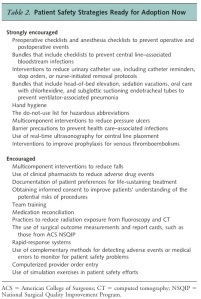I’ve gotten a bit behind in my posts mostly as I’ve just moved back from New Zealand but I’m hoping to get a few more regular posts. For those who’ve read this blog, you’ll know that I like to highlight innovative approaches to simulation. This post is mostly for those interested in medical simulation…hopefully providing some new ideas.
One of my interests is procedural skill acquisition and how simulation can be used to enhance learning. So when I came across this paper I thought it deserved mention. The authors, from the University of Toronto describe using “hybrid” simulation for teaching knee arthrocentesis among internal medicine residents. Residents went through a procedural skills curriculum where they received teaching and practice performing arthrocentesis. They had to interact with a standardized patient and explain risks/benefits of the procedure. Then they were evaluated on both technical & non-technical skills in a separate scenario. They demonstrated the feasibility of this approach and they showed high ratings of realism among trainees & standardized patients and it functions as a hypothesis generating study for if these acquired skills are translated to the clinical setting.
Hybrid simulation is actually a pretty cool concept. For those are new to this, hybrid simulation combines patient interaction (using a standardized patient) with a bench model (or task trainer) that allows for procedural skill practice. The benefit of this technique is the learner gets to interact with a patient as if they’ll be the recipient of the procedure while also getting to master the technical skills of the procedure.
Using procedural competency as a goal in procedural training, hybrid simulation is an excellent method for integration into a training curriculum. In one definition of competency:
“it refers to a resident’s ability to safely prepare for, perform and navigate the complications of a procedure” (Mourad et al. J Gen Med 2010).
Hybrid simulation will allow the learner to manage each of these aspects. They practice how to prepare for the procedure (both technically and preparing the patient). This will include consenting the standardized patient to the risk and benefits. I think we often forget this key aspect and instead focus on the technical skill. Furthermore, hybrid simulation scenarios can also integrate complications and evaluate the learner as they manage both the technical and interpersonal issues that must be addressed.
Another group at the University of Ottawa has started using OSCEs as a method for evaluating procedural skills which also is quite innovative! I came across an abstract they recently presented and a quick google search revealed a manuscript that further outlines the integration of an OSCE for procedural skills. Definitely worth checking out.
In simulation, we spend thousands of dollars on advanced equipment that is designed to replicate real patient interaction. However, hybrid simulation shows us that we can enhance fidelity even more by using some imagination and combining a task trainer with a live actor.
Another example while I was in Auckland, I ran full trauma simulations with a live patient. At the helicopter base, we had an actor who had suffered a considerable trauma from a motor vehicle accident. Its very impressive to watch a team interact with a “real” patient compared to a manikin. There’s much greater concern with pain and emphasis towards communication of each management step – these are definitely lost during interaction with a manikin.
I think medical educators and those involved in curriculum design need to take the next step as we seek to improve procedural skill teaching in medicine – let’s start integrating live patient actors into our simulations. We’re starting to see that it’s feasible and that some considerable benefit can be ascertained. As we seek procedural competence, we cannot forgot the trainee should be evaluated for their ability to explain and work with a live patient throughout the procedure. Its not infrequent that trainees learn to perform a procedure but they have no idea the complication rate or even what can go wrong! Then when something does actually go wrong they haven’t thought about it. Integration of these hybrid simulations will only enhance trainee skills and lead to improvements in patient safety – something we’re all working so hard to improve.


